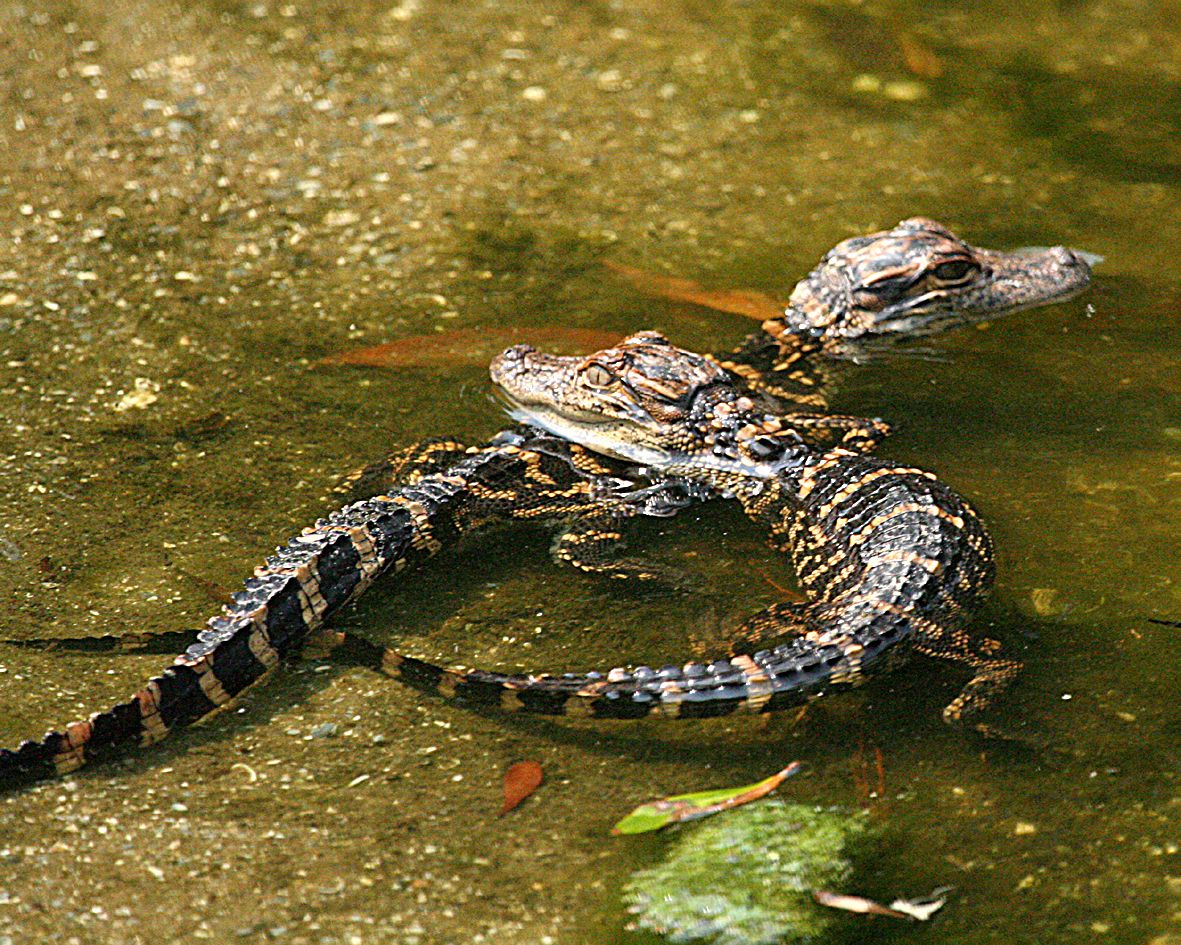Research and Conservation
Alligators
Data from a long-term study of alligators on Spring Island shows that alligators that have been negatively conditioned are more likely to avoid humans.
In 2009, the LowCountry Institute began a long-term study of alligators on Spring Island, conducted by researchers Tom Murphy (SCDNR-retired) and George Rock. Overall population size is estimated to be 42 adults and nearly 100 juveniles on the golf course. While the population is dynamic, recapture rates suggest most of the adult alligators have been captured and tagged. One of the objectives of the study, besides determining overall population demographics, is to look at how alligators interact with people. At the beginning of the study, average flight distance (distance at which an alligator, when approached by a human, submerged or went the other direction) was 23 yards. After more than 350 captures of 280 individuals, the average flight distance is 47.6 yards and alligators continue to exhibit this behavior even after 9 years since capture.
In 2016, two adult male alligators were captured and tagged with satellite transmitters to monitor their movements. The two individuals exhibited very different movement patterns - one alligator spent most of the summer out in the salt marsh, periodically visiting ponds along the perimeter of the island presumably for freshwater. The second spent its time moving between freshwater ponds on the island and covered a significant part of the island in the process. This animal’s home range included 3,000 acres and 15 different ponds and the saltmarsh.
This project has now become part of a regional study, coordinated by Dr. Ernie Wiggers (executive director of the Nemours Foundation) and Dr. Cathy Jachowski (Clemson University) in partnership with the LowCountry Institute, Tom Murphy, and Dr. Thomas Rainwater (Clemson University) looking at alligator ecology in human dominated landscapes of coastal South Carolina. Study sites include Spring Island, Sea Pines Plantation, Kiawah Island, Yawkey Center, and Fripp Island. Six alligators were tagged at each of the five study sites. The overarching goal of this research is to develop a better understanding of how American alligators alter their behavior and ecology in response to human modifications of the landscape and associated disturbances, in order to provide communities with information that can be used to minimize human-alligator interactions.
Some study observations:
-
Several alligators travelled longer-than-expected distances. One male travelled from Sea Pines on Hilton Head over 25 km to Tybee Island, GA. It was relocated up-river by animal control before moving out into the ocean 20 km off the coast of Hilton Head before the signal was lost. A female alligator from Spring Island travelled over 3.5 kilometers from its range on Spring Island to neighboring Rose Island. This is interesting since females are generally considered to have much smaller home ranges and greater site fidelity compared to males.
-
Though alligators are heavily dependent on freshwater habitats, several tagged animals are spending considerable amounts of time in salt marsh habitats. Alligators using salt marsh are presumed to be feeding, which is considered to be an important alligator behavior to link freshwater and saltwater ecosystems.
-
Where alligators were assumed to occupy territories around specific ponds or restrict their movements to particular areas in each community, several alligators have been observed travelling more than expected with ranges encompassing the entire island and boundary areas. This information could suggest that there are fewer alligators, specifically large alligators, residing in these island communities than previously estimated.
-
Being captured (and thus negatively conditioned) increased the likelihood that an alligator would flee at the approach of a person as well as the flight distance (the distance away the person was when the alligator either moved away or went under water). This may also extend to alligators who observed the capture of another alligator. Capture and release protocols can result in an aversive conditioning response in alligators, effectively reducing habituation to humans.

Copyright © Spring Island Trust
40 Mobley Oaks Ln. · Okatie, SC 29909 · 843-987-7008
Site by Sans Sheriff Studio


